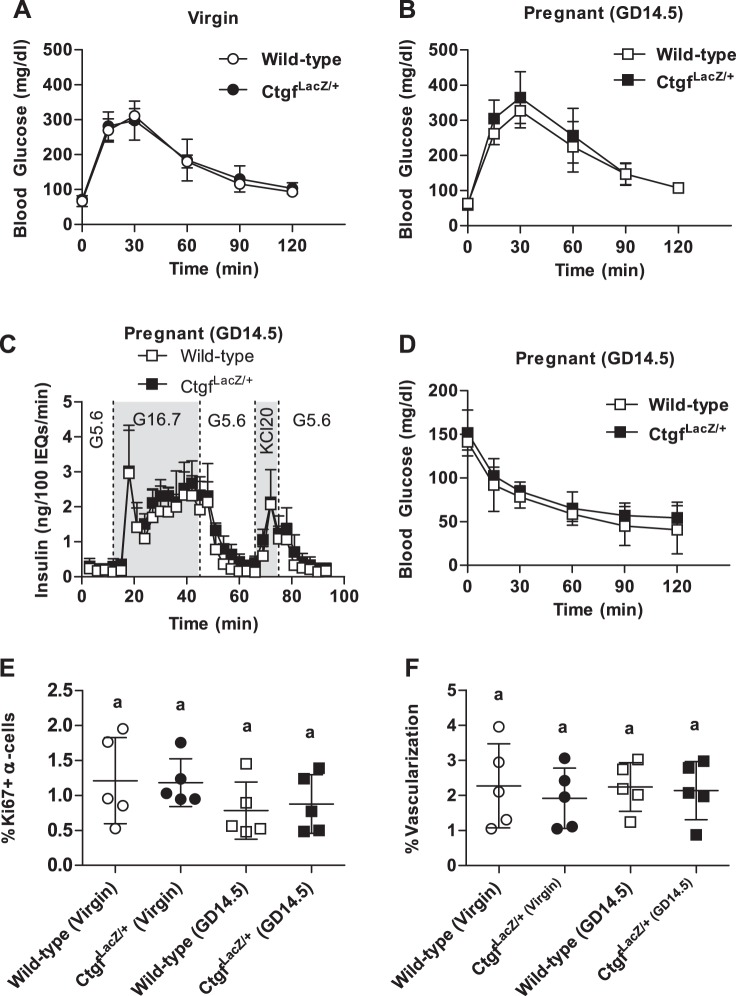Fig. 4.
CtgfLacZ/+ females have normal glucose tolerance, insulin tolerance, α-cell proliferation, and islet vascularization. A and B: whole body glucose tolerance in virgin (A) and gestational day 14.5 (GD14.5; B) wild-type and CtgfLacZ/+ females. Sample sizes were as follows: wild-type virgin, n = 4; CtgfLacZ/+ virgin, n = 11; wild-type pregnant (GD14.5), n = 8; CtgfLacZ/+ pregnant (GD14.5), n = 7. C: glucose-stimulated insulin secretion from whole intact islets isolated from pregnant (GD14.5) wild-type or CtgfLacZ/+ females (n = 3 mice/group), as assayed in a cell perifusion system. Islets were exposed to 5.6 mM glucose (G5.6), 16.7 mM glucose (G16.7), and 20 mM potassium chloride (KCL20). D: intraperitoneal insulin tolerance test in GD14.5 wild-type and CtgfLacZ/+ mice. Sample sizes were as follows: wild-type pregnant (GD14.5), n = 3; CtgfLacZ/+ pregnant (GD14.5), n = 5. E and F: quantification of α-cell proliferation (E) and islet vascularization (F) in virgin and pregnant (GD14.5) wild-type and CtgfLacZ/+ mice. Error bars represent standard deviation. Samples with the same letter are not significantly different from each other (P < 0.05).

